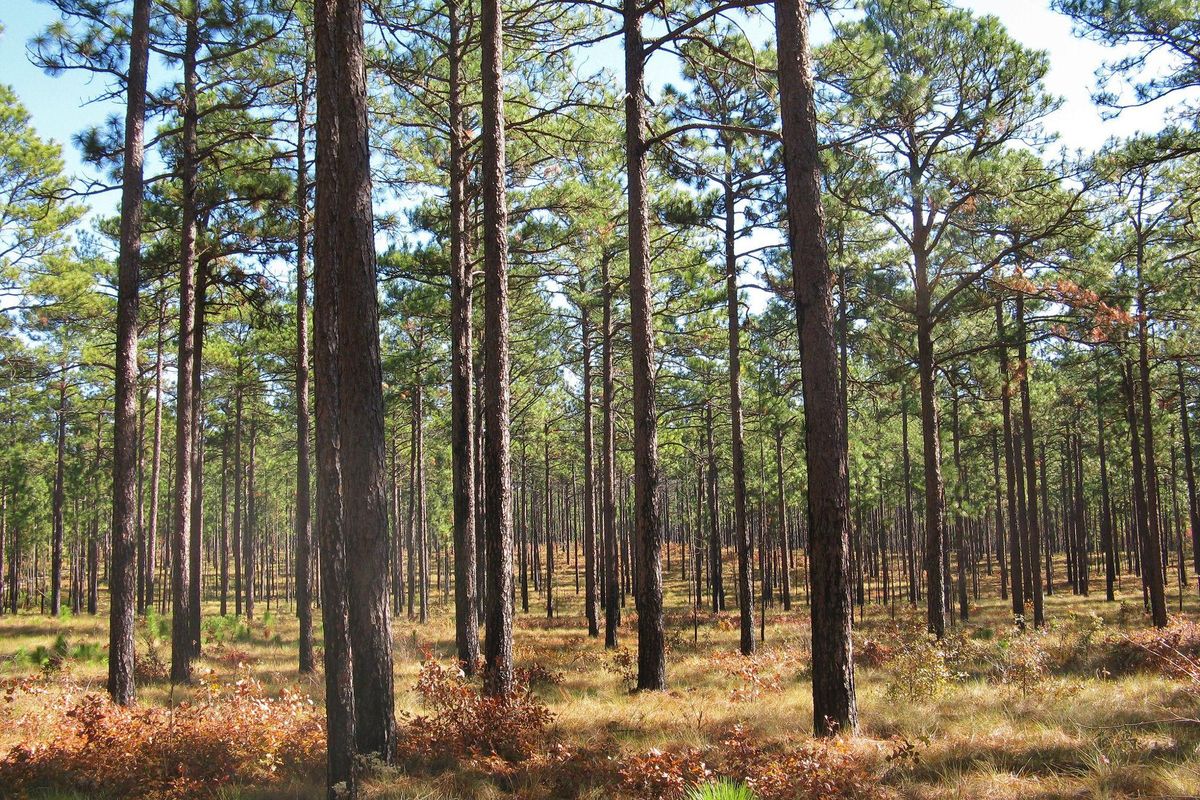
Pine trees are tracking airborne chemicals, according to new research.
Every pine needle tested in a North Carolina State University study contained PFAS chemicals—with researchers finding more than 70 different types of the compounds.
Per- and polyfluoroalkyl substances, called PFAS, are toxic chemicals used in many consumer and industrial products. Exposure to these chemicals has been linked to health problems such as certain types of cancer, reproductive issues, and birth defects. Because PFAS bioaccumulate—or build up—in the environment, they can be found almost anywhere, even in the waxy coating that covers pine needles.
Researchers found that testing pine needles for PFAS can provide a convenient and low-cost way to track the prevalence of PFAS in the air. The researchers tested pine needles from 20 sites around North Carolina, as well as pine needles collected from the area in the past five decades, to determine the abundance of airborne PFAS as well as the changes in types of PFAS used over time. The researchers did not find any pine needles that were free of the chemicals, said Kaylie Kirkwood, a PhD student at North Carolina State University and the lead author on the study.
“I was really surprised by the magnitude of some of the PFAS that we found,” Scott Belcher, a professor of biological sciences at North Carolina State University and an author on the study, told EHN.
The research emphasizes the prevalence of all types of PFAS—including newer PFAS such as GenX—in the air we breathe, especially near areas such as airports, chemical plants, or military facilities. Their method of testing pine needles also provides a potential new, low-cost, and convenient way to monitor PFAS movement through the air, which is valuable information for those concerned about their PFAS exposure.
PFAS spikes over time
Particularly surprising, said Belcher, was the level of PFAS found in trees near the Raleigh International Airport and the North Carolina National Guard facility. While the researchers had expected those sites to be highly contaminated, the actual readings were much higher than expected. The researchers suspect this is due to hydraulic fluid used in aircrafts and firefighting foam used in training, respectively, and the results point to high occupational hazards for people working in and around those facilities.
The levels of PFAS in the historical pine needles correlated well with documented changes in PFAS use in the past 50 years. For example, the researchers noticed a sharp increase in PFAS in the late 1960s, around the same time when manufacturers began to use PFAS in firefighting foam. Needles collected from the 90s and beyond showed a higher percentage of newer PFAS, such as the chemical GenX.
Related: What are PFAS?
The abundance of PFAS in pine needles also raises alarms about how PFAS are moved around in the environment, especially because the chemicals are so persistent and do not break down. In North Carolina, for example, pine needles are used frequently in landscaping. Every time that happens, said Belcher, PFAS are moved around even further and may be at risk of leaching into soil and groundwater. The research also raises concerns about how PFAS might be re-released into the air when pine needles are burned.
PFAS citizen science
Passive monitoring by using pine needles really expands the amount of data that scientists can collect, said Erin Baker, a professor of chemistry at North Carolina State University and an author on the study. The trees collect data constantly, eliminating the need for scientists to rush out into the field and monitor the air during specific contamination events. Testing pine needles, said Baker, also makes it easier to complete site-specific monitoring. “It gives us a capability to check some of these places that we’re worried about without having to go on site and grab specific samples; we can just go to a tree that’s nearby,” she told EHN.
In the future, Kirkwood imagines a citizen science effort to use PFAS to get a much more comprehensive picture of airborne PFAS—anyone, after all, could collect pine, spruce, or fir needles from a tree outside their home, and could have a good picture of the levels and types of PFAS they are exposed to daily. “Having this ability to monitor cheaply really makes some of these things possible,” said Belcher. “So this will have a bigger reach.”
Kirkwood also said that the importance of herbaria (plant collections often housed in museums or universities) should not be overlooked. Some herbaria, she said, are shut down to save costs. However, the plants held in those herbaria hold important data that can be used to track pollution over time, she told EHN.
See the full study here.
Banner photo: Pine trees in North Carolina. (Credit: Travis/flickr)
